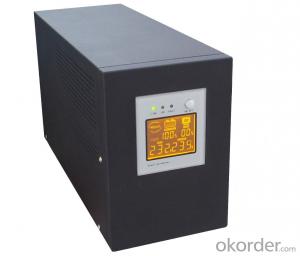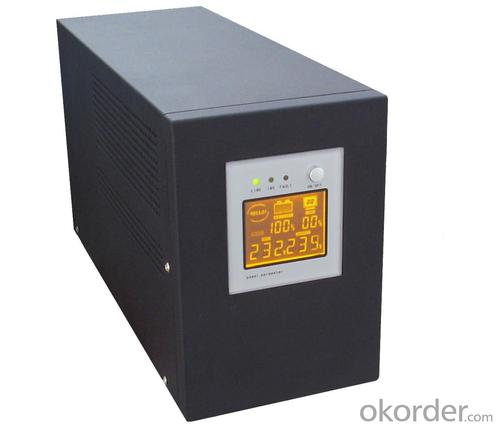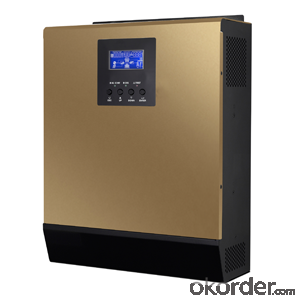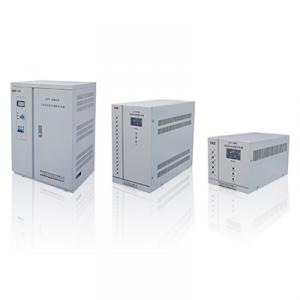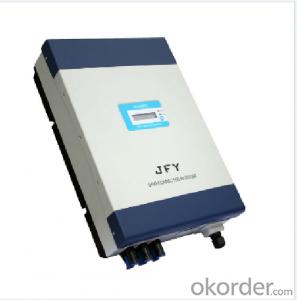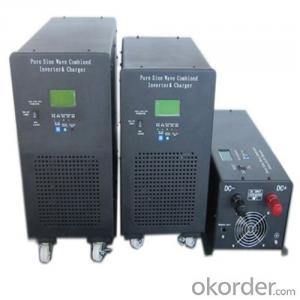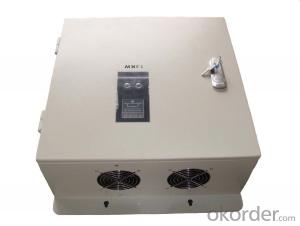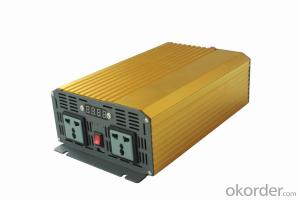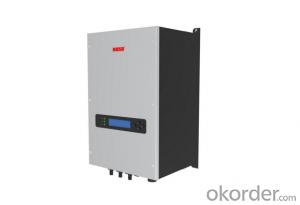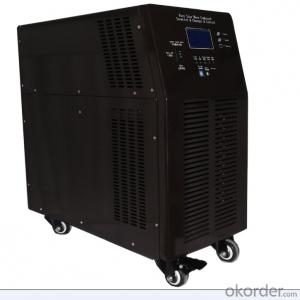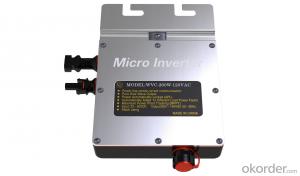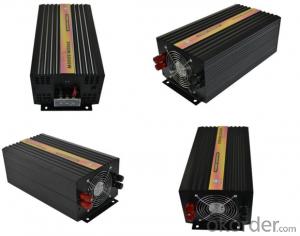Kstar Solar Inverter - Single Phase Inverter Made in China
- Loading Port:
- Shanghai
- Payment Terms:
- TT OR LC
- Min Order Qty:
- 0 watt
- Supply Capability:
- 10000 watt/month
OKorder Service Pledge
OKorder Financial Service
You Might Also Like
Description of Single Phase Inverter
Solar ac power system consists of solar panels, charge controllers, inverter and battery; Solar energy does not include inverter dc power system. Inverter is a kind of power conversion device, inverter by incentives can be divided into self-excited oscillation inverter and separately excited oscillation inverter.
Features of Single Phase Inverter
High MPPT accuracy(>99.9%)
Wide DC input range (60~300 Vdc), compatible with different module
Easy to wire, install and operate
IP65 design, suitable for indoor and outdoor installation
10 years warranty(5~25 years optional)
New high frequency design Higher power quality
Casting shell design Beautiful and convenient installation
Technical Data of Single Phase Inverter
| Type | Omniksol-1k-TL2-M |
| Input(DC) | |
| Max.PV Power | 1.25kW |
| Max,DC Voltage | 500V |
| Operating MPPT Voltage Range | 60-450V |
| MPPT Voltage Range at Nominal Power | 100-300V |
| Start up DC Voltage | 70V |
| Turn off DC Voltage | 50V |
| Max, DC Current | 11A |
| Max, Short Cicuit Current for each MPPT | 14A |
| Number of MPP trackers | 1 |
| Number of DC Connection for each MPPT | 1 |
| DC Connection Type | MC4 connector |
| Output(AC) | |
| Max,AC Apparent Power | 1000VA |
| Nominal AC Power (cos phi = 1) | 1000W |
| Nominal Grid Voltage | 220V/230V/240V |
| Nominal Grid Frequency | 50Hz/60Hz |
| Max, AC Current | 5.0A |
| Grid Voltage Range** | 185-276V |
| Grid Frequency Range** | 45-55Hz/55-65Hz |
| Power Factor | >0.99 |
| Total Harmonic Distortion(THD) | <3% |
| Feed in Starting Power | 30W |
| Night time Power Consumption | <1W |
| Standby Consumption | 6W |
| AC Connection Type | Plug-in connertor |
| Efficiency | |
| Max,Efficiency | 96.5% |
| Euro Efficiency | 95.8% |
| MPPT Efficiency | 99.9% |
| Safety and Protection | |
| DC Insulation Monitoring | Yes |
| DC Switch | Optional |
| Residual Current Monitoring Unit (RCMU) | Integrated |
| Grid Monitoring with Anti-islanding | Yes |
| Protection Class | Ⅰ(According to IEC 62103) |
| Overvoltage Category | PV Ⅱ/ Mains Ⅲ(According to IEC 62109-1) |
| Reference Standard | |
| Safety Standard | EN 62109, AS/NZS 3100 |
| EMC Standard | EN 6100-6-1, EN 6100-6-2, EN 6100-6-3 EN 6100-6-4, EN 6100-3-2, EN 6100-3-3 |
| Grid Standard | VDE-AR-N4105. VDE-0126-1-1,G83/1,EN 50438,RD1699,CEI 0-21, AS4777,C10/C11 |
| Physical Structure | |
| Dimensions | 210x290x90mm |
| Weight | 5kg |
| Environmental Protection Rating | IP 65 (According to IEC 60529) |
| Cooling Concept | Natural convection |
| Mounting Information | Wall bracket |
| General Data | |
| Operating Temperature Range | -25℃ to +60℃(derating above 45℃) |
| Relative Humidity | 0% to 98%, no condensation |
| Max. Altitude (above sea level) | 2000m |
| Noise Type | <45dB |
| Isolation Type | Transformerless |
| Display | 2LED Backlight 16*2 Character LCD |
| Data Communication | RS485(WiFi, GRPS optional) |
| Computer Communication | RS232 as option |
| Standard Warranty | 10 Years (5-25 years optional) |
IMages of Single Phase Inverter
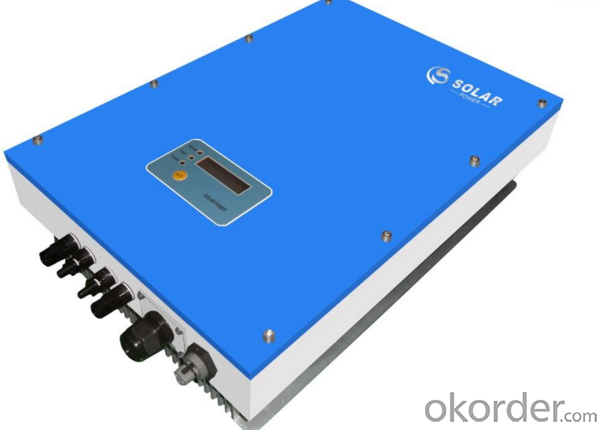
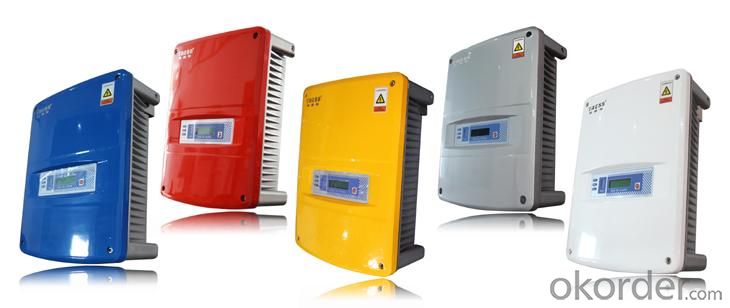
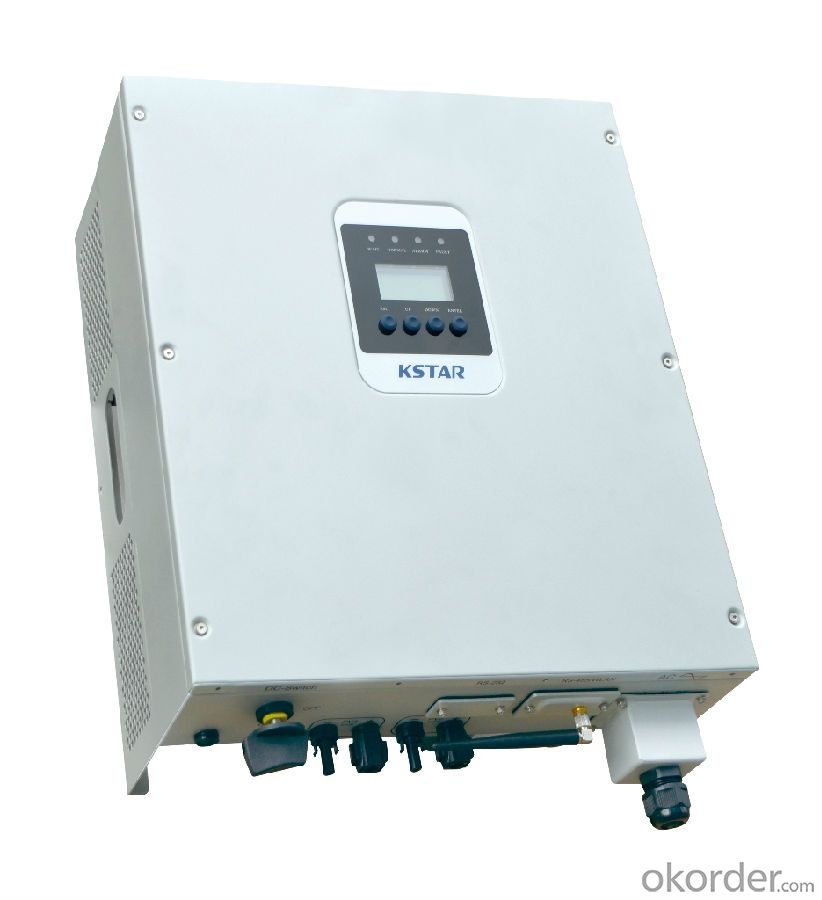
FAQ
Q: Do you have the CE, TUV, UL Certification?
A: We’ve already passed all the tests, and any certificate is available.
Q: Have you ever sold your products to companies in my country?
A: Of course, we have customers in all general PV markets, but I think we should expand our market share along with the market growth.
Q: When did your company set up? You are a new company, how can I believe your quality?
A: We entered into Solar PV industry in 2005, now we have several plants in manufacturing of a-Si and c-Si panels, and our capacity is 220MW per year. Till now we have already passed all the tests by authorized laboratories, e.g. TUV, CE, UL.
Q: Can you help us install the module if we cooperate with you?
A: We haven’t entered into installation sector, but we have the plan in near future.
Q: How do you pack your products?
A: We have rich experience on how to pack the panels to make sure the safety on shipment when it arrives at the destination.
Q: Can you do OEM for us?
A: Yes, we can.
Q: Can we visit your factory?
A: Surely, I will arrange the trip basing on your business schedule.
- Q: Can a solar inverter be used with solar-powered water pumps?
- Yes, a solar inverter can be used with solar-powered water pumps. A solar inverter is responsible for converting the direct current (DC) produced by solar panels into alternating current (AC) that can power electrical devices, including water pumps. This allows the solar panels to directly power the water pumps, making them suitable for off-grid or remote locations where access to electricity is limited.
- Q: What are the safety certifications to look for in a solar inverter?
- When considering a solar inverter, it is important to look for safety certifications such as the UL 1741 standard for grid-tied inverters, which ensures compliance with safety and performance requirements for electrical equipment. Additionally, certifications like IEC 62109 and CSA C22.2 No. 107.1 demonstrate compliance with international safety standards. It is also advisable to check for certifications related to electromagnetic compatibility (EMC) and protection against overvoltage or overcurrent situations.
- Q: How does a solar inverter prevent reverse current flow?
- A solar inverter prevents reverse current flow by using a built-in feature called an anti-islanding protection mechanism. This mechanism detects when there is a loss of grid power and immediately shuts down the inverter to prevent any power from flowing back into the grid. This ensures the safety of utility workers who may be working on the grid during a power outage and also prevents damage to the solar panels and the inverter itself.
- Q: How does a solar inverter communicate with other devices in a solar power system?
- A solar inverter communicates with other devices in a solar power system through various communication protocols and interfaces. One common method is through wired connections using communication interfaces such as RS485 or Ethernet. These interfaces allow the inverter to establish a direct connection with other devices such as solar panels, batteries, and monitoring systems. In addition to wired connections, wireless communication methods are also used. This includes technologies like Wi-Fi, Zigbee, or Bluetooth, which enable the inverter to connect with other devices within a certain range. Wireless communication is often used for monitoring and control purposes, allowing users to remotely access and manage their solar power system. The communication between the solar inverter and other devices is crucial for the overall performance and efficiency of the solar power system. It enables the inverter to receive important data from the solar panels, such as voltage, current, and temperature, which is necessary for optimal power conversion. The inverter can then adjust its operations based on this information to maximize the power output and ensure system safety. Furthermore, communication with other devices like batteries allows the solar inverter to manage the charging and discharging cycles, optimizing energy storage and utilization. This ensures that excess energy generated by the solar panels is efficiently stored in the batteries and used during periods of low sunlight. Overall, the communication capabilities of a solar inverter play a crucial role in the integration and coordination of different components within a solar power system. It enables efficient power conversion, monitoring, and control, ultimately maximizing the performance and benefits of solar energy generation.
- Q: What is the role of a grid protection relay in a solar inverter?
- The role of a grid protection relay in a solar inverter is to monitor the electrical grid for any abnormalities or faults, and to disconnect the solar inverter from the grid if necessary. This helps to ensure the safety and stability of the grid, as well as protecting the solar inverter from potential damage.
- Q: What is the difference between low voltage grid connection and medium voltage grid connection?
- The difference is that the current at low voltage and the grid is large, the current is small when the voltage is small, followed by the low voltage crossing parameter setting problem (such as PV inverter integrated with inverter and low voltage crossing function, not all photovoltaic inverter
- Q: How does a solar inverter impact the overall system reliability?
- A solar inverter plays a crucial role in ensuring the overall system reliability of a solar power system. It converts the direct current (DC) generated by solar panels into alternating current (AC) that is suitable for use in homes or businesses. By efficiently converting the energy and maintaining optimal voltage and frequency levels, the inverter ensures that the system operates reliably and consistently. It also provides various protective functions, such as monitoring and controlling the system's performance, detecting faults or abnormalities, and shutting down the system in case of emergencies. Therefore, a well-functioning solar inverter significantly impacts the overall system reliability by maximizing energy production, preventing damage, and ensuring smooth operation.
- Q: Can a solar inverter be used in regions with high altitude conditions?
- Yes, a solar inverter can be used in regions with high altitude conditions. However, it is important to consider certain factors such as temperature, air density, and potential voltage fluctuations that can affect the performance of the solar inverter at high altitudes. Specialized inverters or adjustments may be required to ensure optimal functioning in such conditions.
- Q: How does a solar inverter affect the voltage stability of a solar system?
- A solar inverter plays a crucial role in maintaining voltage stability in a solar system. It converts the direct current (DC) generated by solar panels into alternating current (AC) suitable for use in homes and businesses. By monitoring and adjusting voltage levels, a solar inverter ensures that the power output remains consistent and within acceptable limits. This helps to prevent voltage fluctuations, voltage drops, and other electrical instabilities, ensuring a stable and reliable power supply from the solar system.
- Q: What is the role of a solar inverter in preventing overloading?
- The role of a solar inverter in preventing overloading is to regulate the flow of electricity from the solar panels to the electrical grid or battery system. It ensures that the amount of power being generated by the solar panels does not exceed the capacity of the grid or battery, thus preventing overloading and potential damage to the system.
Send your message to us
Kstar Solar Inverter - Single Phase Inverter Made in China
- Loading Port:
- Shanghai
- Payment Terms:
- TT OR LC
- Min Order Qty:
- 0 watt
- Supply Capability:
- 10000 watt/month
OKorder Service Pledge
OKorder Financial Service
Similar products
Hot products
Hot Searches
Related keywords
